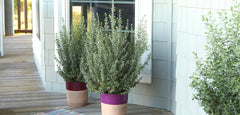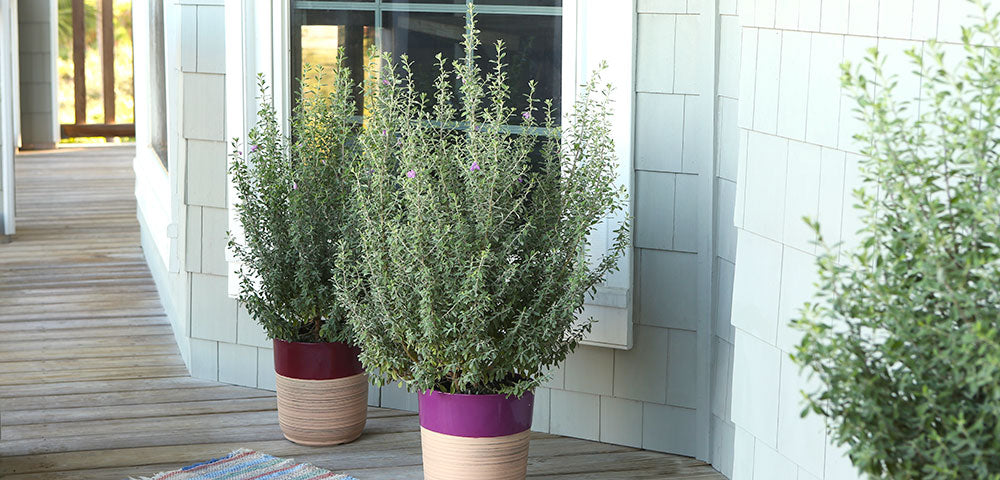Texas Sage (Leucophyllum frutescens)
Texas Sage Plant Features
Grow Texas sage (Leucophyllum frutescens) in your yard for lots of easy-care beauty. This North American native shrub (it hails from areas in Texas and Mexico) features gorgeous silvery foliage and attractive lavender-purple flowers on and off from spring, through the summer, and into autumn. The flowers attract bees, butterflies, and other polliantors. It grows well in containers, as well as garden beds and borders, so there are a number of ways to use Texas sage (also called Texas ranger) to add beauty to your outdoor spaces. You can often find this plant sold as a bushy shrub or pruned in standard form to look like a miniature tree. It typically grows about 8 feet tall and 6 feet wide as a landscape shrub where it's hardy.Try Texas sage in container gardens on a hot, sunny deck or patio. The silvery foliage makes an elegant backdrop for just about any plant, including other heat-loving blooming tropicals, such as bougainvillea or mandevilla. In Zones 8-10 where it's hardy, plant it as an attractive shrub. Its fine-textured foliage makes Texas sage a good hedge, accent plant, or foundation planting. It takes pruning well, if you wish, so you can also grow it in shrub borders or even with perennials and annuals. Because of its drought tolerance, Texas sage is often used in xeriscaping.
Texas Sage Questions?
Just drop us an email. Our experts are happy to help!
Texas Sage Growing Instructions
Grow Texas sage in a spot with full sun (at least 6 to 8 hours of direct sun each day). This sun-loving plant will tolerate part shade (areas with morning shade and afternoon sun), but is more likely to grow lanky and bloom less.A drought-tolerant shrub, once established, water Texas sage only during periods of drought (or when the container garden it's in starts to dry out). Take care not to water Texas sage too much -- particularly if you have clay soil or your yard doesn't drain well. In areas with poor drainage, it's best to grow Texas sage on raised mounds or in container gardens.
Prune Texas sage as necessary to keep its size and shape pleasing to you. The best time to prune is early spring, though you can prune Texas sage at any time without worry about harming the plant.
When grown in the landscape or garden, Texas sage typically doesn't need to be fertilized. But if you'd like to fertilize it for faster growth -- or are growing it in container gardens -- you can use a general-purpose garden fertilizer. Be sure to follow application instructions on the product's label to know how much fertilizer to use and how often to apply it.
Texas sage is not intended for human or animal consumption.
-
Water
Low water needs
-
Light
Outside: Sun
-
Colors
Pink
Purple
Silver
-
Special Features
Attracts butterflies
Colorful foliage
Deer/rabbit resistant
Super-easy to grow
Complement your Texas Sage
MandevillaYou can't go wrong mixing pink or red mounding mandevillas with silvery Texas sage!
Snake Plant
Create a dramatic, easy-care contemporary combination by mixing textural snake plant with silvery Texas sage.
Mexican Heather
Plant a carpet of color around the base of Texas sage with the fluffy look of Mexican heather -- which as complementing flowers.
Vinca, Annual
Heat-loving, low-water vinca grows well with gorgeous Texas sage.

